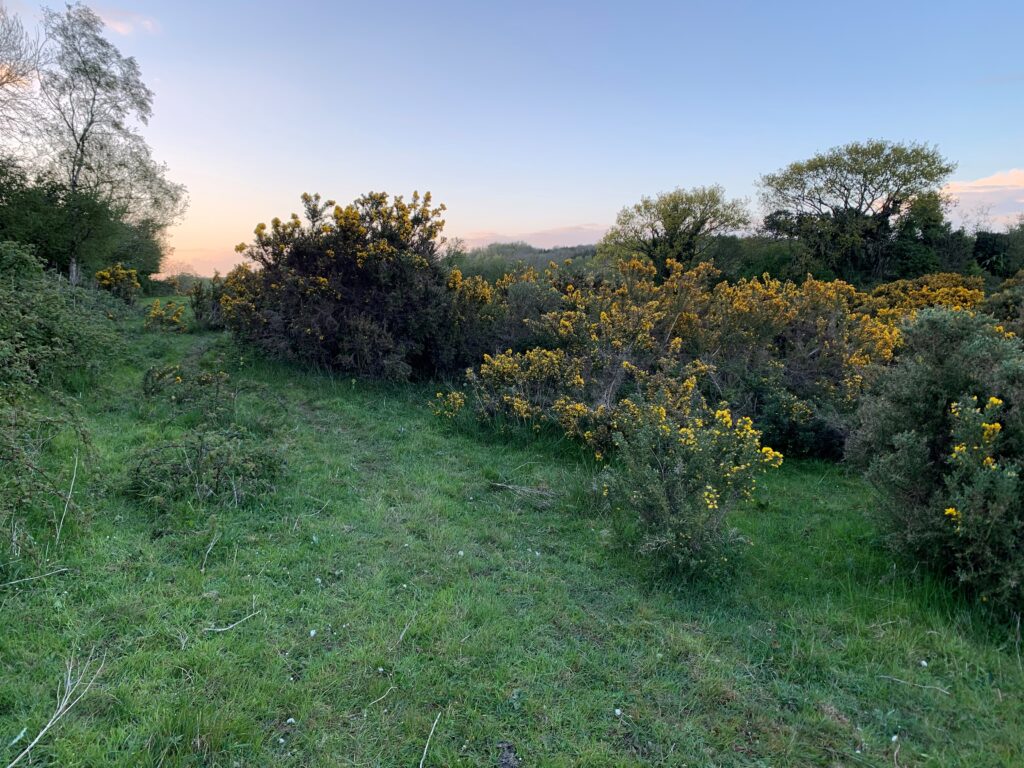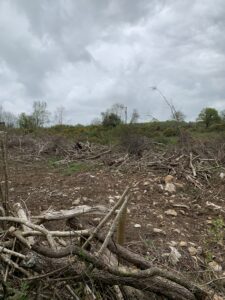SCRUBGRUBBER and the Environment
SCRUBGRUBBER Environmental
It may look untidy, but scrub is an important habitat for lots of rare and marginalised plants and animals, who rely on it for their survival. However, if it isn’t managed, it can take over, turning equally important wildflower rich and productive grassland into a tangled, acidified, intractable wasteland.
Allowing some scrub to develop and mature creates important nature corridors that allows wildlife to move around, and shelter from exposed open grassland. However, the removal of scrub made up of invasive and native species such as Gorse, thorn bushes and briars is essential to prevent the loss of ecologically important grassland and native woodland habitats. Gorse is an especially hard plant to control once it is established due to its persistent nature.
Its nitrogen-fixing ability means that it tends to inhabit areas with poorer soils where other plants find it hard to survive. It also has very durable seed that can remain viable in the soil for up to 40 years and even ploughing or burning of the soil won’t help if not done correctly. In fact, these methods often provide even better conditions for gorse seeds to germinate in because there is even less competition from other plants that aren’t so hardy.
A thick layer of gorse plants makes the underlying soil more acidic, so replanting efforts will need to take this into account – choose trees and shrubs that do well in acid soils.


Scrub Removal Methods
1. Cutting and slashing down scrub is still the most immediate solution if you don’t plan to use chemicals. It is hard work and almost always needs to be done by hand because Scrub tends to like growing on poor soils, usually on inclines that aren’t conducive to large vehicle or mower access, and where hidden rocks and hazards abound, particularly under briar mounds.
2. Spraying scrub with chemicals such as triclopyr (e.g. Grazon, in summer and autumn), picloram + triclopyr (e.g. Tordon Brushkiller, in spring and summer) and metsulfuron (e.g. Escort, all year), can be effective on woody Scrub. Some herbicides however are not very effective on gorse because of the shape of the ‘foliage’ and the thick cuticles on the spines which help prevent absorption of herbicides. All of these chemicals have a severe to very severe effect on clover and other broadleaf plants that are also sprayed as a consequence.
3. Goats and Sheep can be used to control scrub but this is a very long term solution and may prove more appropriate as a follow up treatment on susceptible lands
4. Burning off scrub particularly Gorse is another more risky prospect but can be very effective if done correctly (with permission for your local authority). Someone experienced in this method should be supervising if you do intend to do this, and check with your local council and fire service to see if there are restrictions or permits required. A temperature of 100°C or more for 15 minutes is required to kill gorse seed. The heat should penetrate the soil by about 2cm during this time. Get the temperature wrong (too low) and you will actually encourage up to 100% germination of any gorse seed in the soil.
5. Gorse does have one failing – it requires full sunlight and will die off under heavy shade. If you are intending to re-vegetate an area that is currently overgrown with gorse, you may be able to save yourself a lot of work by clearing small areas and then planting fast-growing, acid soil-loving trees. The Scrubgrubber is an ideal implement for clearing these patches in rows or chess board patterns. The root removal feature of the Scrubgrubber makes this method much more likely to succeed. However this is again a long term strategy and it may take up to 15 years to start shading out the scrub.
6. Large-scale scrub infestations can be cut back using heavy machinery, and big diggers and mulching mowers are especially useful. However, you’ll still need to be diligent in controlling regrowth, and it can be hard to re-establish pasture if you have left a carpet of mulch mixed with seeds and root crowns or a moonscape of rocks, debris and disturbed soil and clay.


